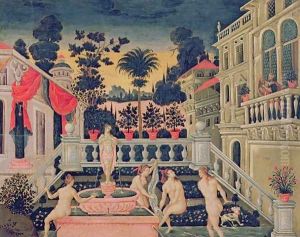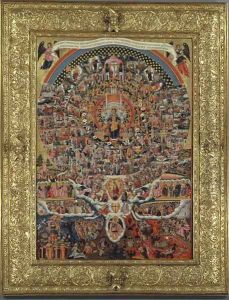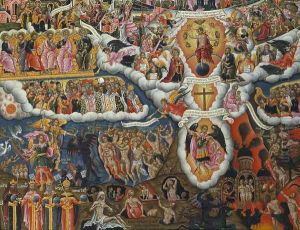Theodoros Pulakis Paintings
Theodoros Pulakis was a Greek painter hailing from the island of Crete, which had a rich tradition of post-Byzantine art, particularly during the Venetian occupation. Born in 1622, Pulakis was part of the Cretan School, a significant movement during the late period of the post-Byzantine art era, which merged local traditions with Western European influences, especially those from the Renaissance and Mannerism.
Pulakis is thought to have been trained within this Cretan environment, which was a thriving center for icon painters who were deeply influenced by both the Byzantine iconographic tradition and the Western artistic techniques. He was an iconographer, a creator of religious images intended for veneration in the Orthodox Christian tradition. His work primarily consisted of hagiographies and scenes from the Bible, rendered with a blend of the meticulous detail characteristic of Byzantine art and the evolving aesthetics of the time.
After the fall of Crete to the Ottomans in 1669, many Cretan artists, including Pulakis, fled to Venice or other parts of Italy, as well as to the Ionian Islands, which were under Venetian control. Pulakis spent a considerable portion of his career in Corfu, where he produced much of his work. During his time there, he was influenced by Western artistic developments and incorporated these into his work, while maintaining a strong Byzantine sensibility.
Pulakis' art is characterized by its vivid coloration, careful attention to detail, and the emotional expressiveness of the figures. He is known to have painted a number of icons and frescoes for Orthodox churches, which were appreciated for their devotional impact as well as their artistic merit.
Theodoros Pulakis died in 1692, leaving behind a legacy that reflects the cross-cultural interactions of his time. His work remains significant for its contributions to both the Cretan School and the broader narrative of post-Byzantine art. Pulakis' icons and frescoes can be found in various churches and collections, where they continue to be studied and admired for their historical and artistic value.


